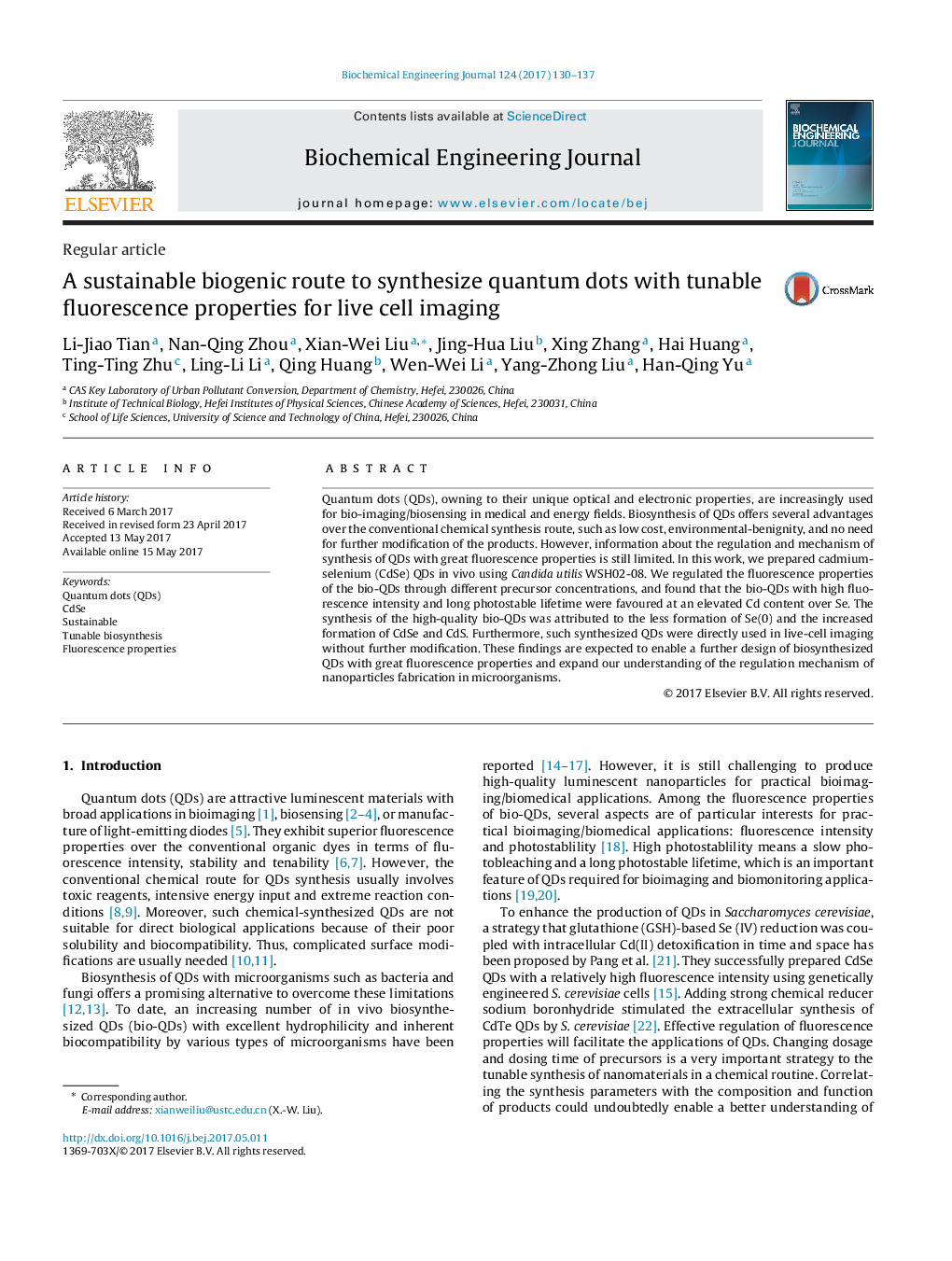| Article ID | Journal | Published Year | Pages | File Type |
|---|---|---|---|---|
| 4752163 | Biochemical Engineering Journal | 2017 | 8 Pages |
â¢High-quality CdSe QDs were synthesized in Candida utilis.â¢QDs fluorescence properties were tuned via adjusting precursor concentrations.â¢The synthesized QDs were directly used for bio-imaging.
Quantum dots (QDs), owning to their unique optical and electronic properties, are increasingly used for bio-imaging/biosensing in medical and energy fields. Biosynthesis of QDs offers several advantages over the conventional chemical synthesis route, such as low cost, environmental-benignity, and no need for further modification of the products. However, information about the regulation and mechanism of synthesis of QDs with great fluorescence properties is still limited. In this work, we prepared cadmium-selenium (CdSe) QDs in vivo using Candida utilis WSH02-08. We regulated the fluorescence properties of the bio-QDs through different precursor concentrations, and found that the bio-QDs with high fluorescence intensity and long photostable lifetime were favoured at an elevated Cd content over Se. The synthesis of the high-quality bio-QDs was attributed to the less formation of Se(0) and the increased formation of CdSe and CdS. Furthermore, such synthesized QDs were directly used in live-cell imaging without further modification. These findings are expected to enable a further design of biosynthesized QDs with great fluorescence properties and expand our understanding of the regulation mechanism of nanoparticles fabrication in microorganisms.
Graphical abstractDownload high-res image (117KB)Download full-size image
